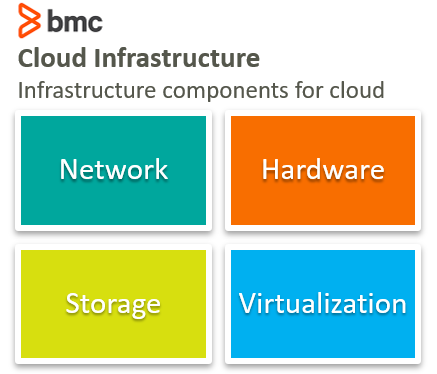
researchHQ’s Key Takeaways:
- Cloud monitoring technology manages cloud infrastructure and produces information on the performance of apps hosted in these environments.
- An organisation’s cloud monitoring strategy should be based on the collection of metrics relating to business problems, growth, and user experience.
- Different systems and metrics should be identified at the various cloud levels to form a systematic approach to cloud monitoring.
- Monitoring should aim for continuous improvements, incorporating feedback into an organisation’s future cloud management strategy.
Cloud environments are notorious for their lack of visibility and control. This makes it difficult to:
- Understand your cloud usage and strategy.
- Optimize for cost, performance, and security.
Cloud computing data centers, and the services running on top of them, collect valuable logs of information that can help users identify and respond to infrastructure performance and changes in real-time, before the impact spreads across the network.
So, let’s look at cloud monitoring and how to choose the right metrics for your organization.
What is cloud monitoring?
Monitoring is essential to maintain the health of the IT environments as well as the performance of apps and services operating on the cloud environment. Specifically, cloud monitoring technologies are designed to manage the cloud infrastructure environment and provide useful information on the performance of the hosted apps.

The cloud monitoring information is used for the following activities:
- SLA management
- Resource management, planning, and provisioning
- Datacenter management
- Troubleshooting
- Billing and accounting
- Security management
- Performance management
Metrics for cloud monitoring
A part of the decision making involves the practice of collecting, analyzing, and understanding logs across these metrics allows users to monitor cloud environments. Metrics provide knowledge on capabilities such as uptime, availability, quality of service, reliability and other key properties of the services being delivered over the Internet.
This information is collected at two levels:
- At the High Level, cloud monitoring assesses software resources on the virtual platform running in the cloud environment.
- At the Low Level, cloud monitoring assesses the underlying hardware infrastructure of the cloud computing datacenters.
Common cloud monitoring metrics
Some of the common metrics used in cloud monitoring are relevant in the following categories:
Metrics on the virtual machine
The performance of applications running on cloud virtual machines (VMs) depends on the underlying host performance. These host servers and hardware resources are shared across servers. Some VMs may consume these resources excessively or require additional resources.
In order to commit resources optimally and avoid resource bottlenecks on individual VMs, view the VMs collectively. The metrics should also support:
- Automated resource management
- Provisioning
- Autoscaling capabilities
For instance, remove alerts for downtime on specific VMs when the autoscale is designed to turn it off while it’s not in use for prolonged periods.
Metrics from the cloud vendor
Service providers offer limited visibility and control into the underlying hardware of cloud systems. A variety of metrics information however is also available in the form of intuitive dashboards and reports. Users can choose metrics by types, categories, and groups that are generated frequently, time-stamped, and aggregated with the necessary descriptive information.
These details make it easy for users to interpret raw metrics and transform vast logs of information into insights through data analytics capabilities. Detailed analysis requires relevant skills and monitoring tools offered by cloud vendors.
Metrics on application performance
At the high level, metrics generate valuable information into application performance. This information can be used to:
- Fine-tune applications
- Identify issues
- Escalate problem resolution
For example, it’s important to capture transactions accurately in large-scale cloud environments. APM products may not capture this information for every user all of the time. Even when transactions are sampled at every small period of time, such as per-second, the number of transactions captured may only be a small percentage of millions of transactions that occur in a large-scale app every day.
Even when captured, additional analytics tools are required to analyze the complete information. The performance management capabilities of the application performing monitoring (APM) tooling can then help make insightful decisions.
Guidelines for custom cloud monitoring metrics
Vast volumes of metrics logs generated in large scale cloud environments are overwhelming and full of noise, which can cause unnecessary decisions that impact business performance. In the real world, your cloud monitoring strategy should guide the collection of useful metrics that solve key business problems, help understand customers, and improve the user experience and business growth.









